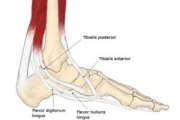LYME & TICK-BORNE DISEASES

Lyme and Tick Borne Disease is a serious problem that is caused by two types of bacteria: borrelia mayonii and borrelia burgdorferi. Lyme disease is the most common tick-borne disease (TBD) however there are numerous other tick-borne diseases that can be transmitted if/when you are bitten by a deer tick that was already infected with the bacteria.
There are signs and symptoms for TBD, these include a small red bump appearing at the site of the bite, this rash can appear within 3 to 30 days and can expand out into a pattern similar to a bull’s-eye but is not always present. Other common early signs of lyme disease are flu like symptoms, chills, fatigue, fever, headaches, and body pains that may accompany the rash.
Advanced TBD symptoms may appear months or weeks after the initial infection. These include further rashes, extreme joint pain and swelling around the knees, inflammation throughout their body – within the membranes surrounding their brain resulting in meningitis or temporary paralysis. Other symptoms include impaired muscle movement, weakness, or numbness in extremities, heart palpitations, severe fatigue, headaches, head pressure, brain fog, and/or difficulty finding words.
Many patients with chronic Lyme disease and TBD complain of “weird” or “strange” symptoms that could not be explained by their doctor. In fact some patients have said that after numerous doctor visits they were told by their physician it was a psychological problem or that their symptoms were hypochondrial in nature. Although a tick bite is an important clue for diagnosis, often times patients don’t recall ever being bit by a tick. This is not surprising because ticks are tiny and their bites are usually painless. That being said, TBD is complicated and often misdiagnosed. Lyme disease has been known as the Great Imitator because of the various symptoms patients demonstrate, some of the misdiagnoses include:
- ADD–like syndrome
- Adrenal Fatigue
- ALS (Lou Gehrig’s Disease)
- Alzheimer’s Disease
- Anxiety Disorder
- Arthritis
- Autoimmune Diseases
- Bipolar Disorder
- Celiac Disease
- Chronic Fatigue Syndrome
- Depression
- Fibromyalgia Syndrome
- Insomnia Irritable Bowel Syndrome (IBS)
- Migraines
- Multiple Sclerosis Parkinson’s Disease
- Rheumatoid Arthritis
- Vertigo
- Lupus
- Thyroid Dysfunction
Treatment
Treatment for lyme disease must be individualized focusing on trunk clearance, detoxification, tissue flush, MLD/MFR/CST, and gentle strengthening to resume normal functioning. A lyme and TBD program includes the following:
- Adequate rest
- No alcohol
- No smoking
- Proper Nutrition
Diet must contain generous amounts of high quality protein and be high in fiber, low in fat, and carbohydrates. No simple carbohydrates/sugars. Choose foods with low glycemic index
Restricted Foods
- Fruits should only be consumed at the end of a meal only and never on an empty stomach; only high fiber fruits; only very small amounts; no fruit juices
- Vegetables – green vegetables and salads, avoid starchy vegetables (potato, corn, beans)
- Starches – none. NO flour foods (breads, cereals, cake, etc) and avoid pasta
- Sweeteners – avoid sugars, fructose, and/or corn syrup. Consume stevia, honey, splenda, and aspartame in small amounts.
- Drinks – water, seltzer, caffeine-free diet sodas, coffee and tea without caffeine and sugar, vegetable juices. Avoid fruit juices, sugar sodas, and any drinks sweetened with sugars or syrup
Exercise Guidelines
For maximum benefit, the exercise session should last at least one hour.
Never exercise two days in a row.
Never allow your heart rate to go above 110 bpm.
Always exercise a muscle group and then stretch that same muscle group right after (i.e. leg press machine then quad stretch).
Be sure to be supported while stretching if you have poor balance. As your balance improves you can progress to stretching in standing or without support.
- Focus on improving overall conditioning to improve strength and reverse the poor conditioning that results from lyme. Focus on a whole-body exercise program, consisting of light calisthenics and weight lifting, using small weights and many repetitions.
- Always use low weight and high repetitions
If you would like more information on PT360’s comprehensive lyme disease program, please call 860-4360 or email us with your questions and/or comments.


